ศิลปิน: Grant Wood
สไตล์: Regionalism
หัวข้อ: America Men Germany Buildings Woman
วันที่: 1930
ขนาด: 74 x 62 cm
พิพิธภัณฑ์: Art Institute of Chicago (Chicago, United States)
เทคนิค: Oil
American Gothic is a painting by Grant Wood in the collection of the Art Institute of Chicago. Wood's inspiration came from what is now known as the American Gothic House, and a decision to paint the house along with "the kind of people I fancied should live in that house." The painting shows a farmer standing beside his spinster daughter. The figures were modeled by the artist's sister and their dentist. The woman is dressed in a colonial print apron evoking 19th-century Americana, and the couple are in the traditional roles of men and women, the man's pitchfork symbolizing hard labor, and the flowers over the woman's right shoulder suggesting domesticity. It is one of the most familiar images in 20th-century American art, and one of the most parodied artworks within American popular culture. In August 1930, Grant Wood, an American painter with European training, was driven around the town by a young painter fromEldon, Iowa, John Sharp, looking for inspiration. He noticed the Dibble House, a small white house built in the Carpenter Gothicarchitectural style. Sharp's brother suggested in 1973 that it was on this drive that Wood first sketched the house on the back of an envelope. His earliest biographer, Darrell Garwood, noted that Wood "thought it a form of borrowed pretentiousness, a structural absurdity, to put a Gothic-style window in such a flimsy frame house." At the time, Wood classified it as one of the "cardboardy [sic] frame houses on Iowa farms" and considered it "very paintable." After obtaining the permission of the Jones family, the house's owners, Wood made a sketch the next day in oil on paperboard from the house's front yard. This sketch displayed a steeper roof and a longer window with a more pronounced ogive than the actual house, features which eventually adorned the final work. Wood decided to paint the house along with "the kind of people I fancied should live in that house." He recruited his sister Nan (1899–1990) to model the woman, dressing her in a colonial print apron mimicking 19th-century Americana. The man is modeled on Wood's dentist, Dr. Byron McKeeby (1867–1950) from Cedar Rapids, Iowa. The three-pronged hay fork is echoed in the stitching of the man's overalls, the Gothic window of the house, and the structure of the man's face. However, Wood did not add figures to his sketch until he returned to his studio in Cedar Rapids. He would not return to Eldon again before his death in 1942, although he did request a photograph of the home to complete his painting.
ศิลปิน |
|
|---|---|
ดาวน์โหลด |
|
สิทธิ์ |
ฟรีสำหรับการใช้ที่ไม่ใช่เชิงพาณิชย์ ดูด้านล่าง |
Grant Wood – งานศิลปะเข้าชมมากที่สุด
|
This image (or other media file) is in the public domain because its copyright has expired. However - you may not use this image for commercial purposes and you may not alter the image or remove the watermark. This applies to the United States, Canada, the European Union and those countries with a copyright term of life of the author plus 70 years.
|


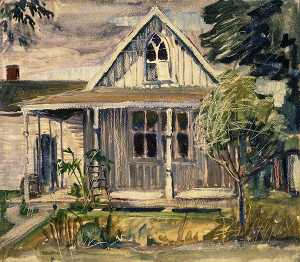
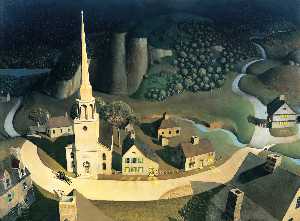
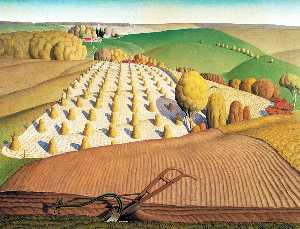


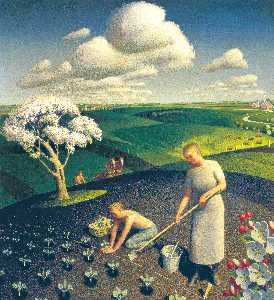

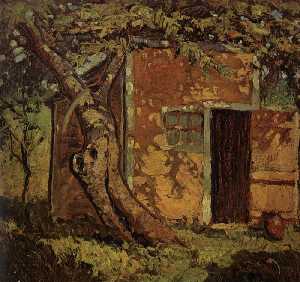
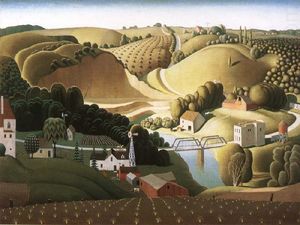
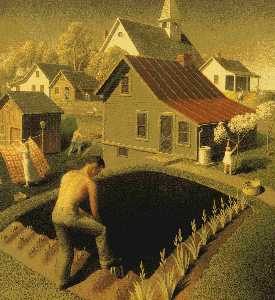
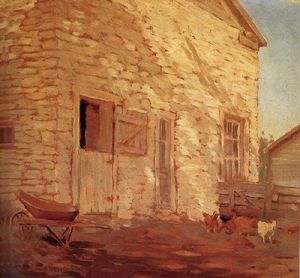
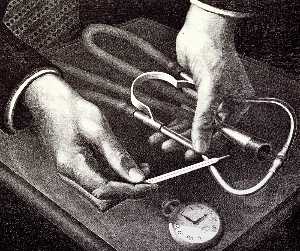
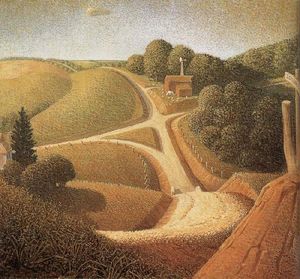
 Note that a few countries have copyright terms longer than 70 years: Mexico has 100 years, Colombia has 80 years, and Guatemala and Samoa have 75 years. This image may
not be in the public domain in these countries, which moreover do not implement the
Note that a few countries have copyright terms longer than 70 years: Mexico has 100 years, Colombia has 80 years, and Guatemala and Samoa have 75 years. This image may
not be in the public domain in these countries, which moreover do not implement the